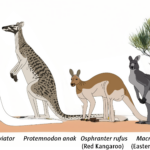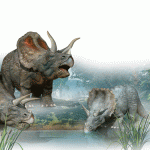
The prehistoric rhino known as “the Siberian rhino” lived in Siberia up until 35,000 years ago.
A prehistoric rhinoceros nicknamed the Siberian unicorn roamed the tundra when modern man arrived in the region, according to new research.
The rhino with the Latin name of Elasmotherium sibiricum weighed more than 3.5 t and had an impressive horn in its forehead, which was probably about 1 m long. So, the animal was at least 1 t heavier than modern rhinos, and it had much longer legs.
Palaeontologists used to think that the prehistoric rhino went extinct some 200,000 years ago, but new dating reveals that the species lived up until about 35,000 years ago. The dating was carried out by scientists from the Natural History Museum in London, and they examined a total of 23 finds of bones from the rhino, such as a skull from their own collection. The dating was made using a new and more accurate method, by which scientists used the Carbon 14 method to date individual amino acids extracted from the bones. Moreover, they managed to isolate the fossils’ DNA for the firs time, indicating that already 43 million years ago,the Siberian unicorn’s line of development separated from the line of modern rhinos.
The new dating means that the Siberian unicorn lived at the same time as Neanderthals and modern man, who probably hunted the rhino. Other finds have demonstrated that ice age humans did not hesitate to hunt animals of this size.






